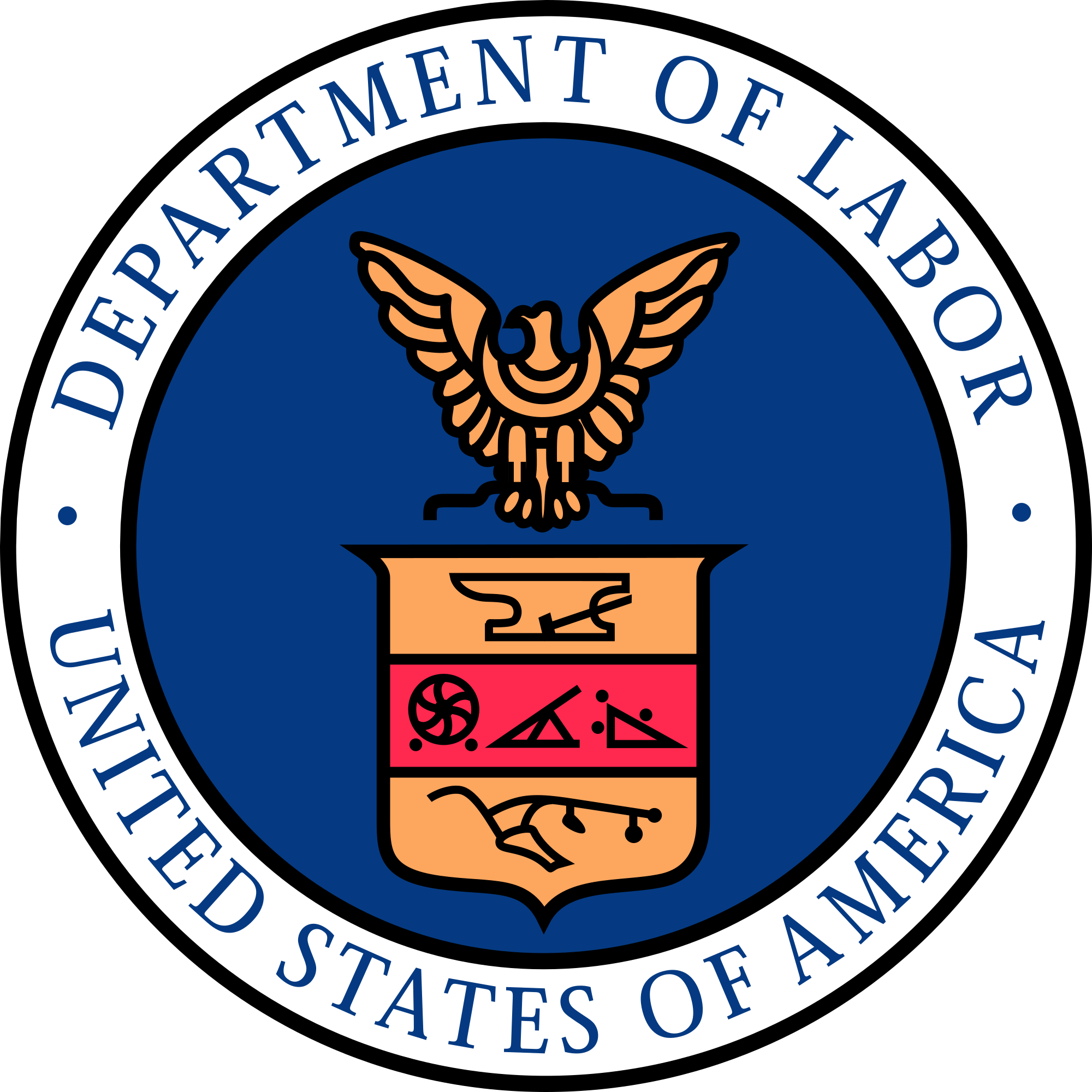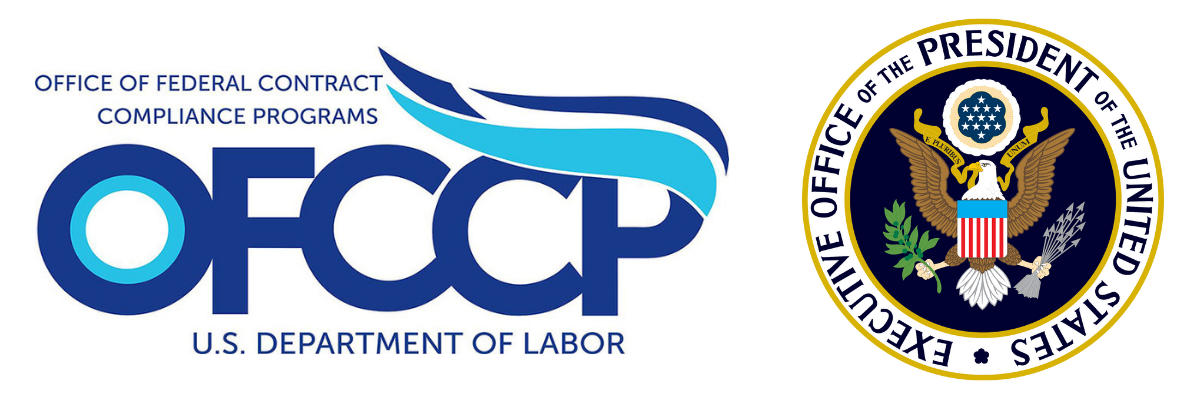 The DE OFCCP Week in Review (WIR) is a simple, fast and direct summary of relevant happenings in the OFCCP regulatory environment, authored by experts John C. Fox, Candee Chambers and Cynthia L. Hackerott. In today’s edition, they discuss:
The DE OFCCP Week in Review (WIR) is a simple, fast and direct summary of relevant happenings in the OFCCP regulatory environment, authored by experts John C. Fox, Candee Chambers and Cynthia L. Hackerott. In today’s edition, they discuss:
- USDOL Secretary Used Prior Secretary Scalia’s Order 01-2020 To Issue A Final Ruling Ordering Convergys to Comply With OFCCP Document Demands
- EEOC Settled Claims That Medical Practice Violated GINA By Collecting COVID-19 Test Results Of Employees’ Family Members
- OFCCP Submitted To OMB Its Final Rule To Rescind Trump-Era Religious Exemption, Publication Likely Prior To Mid-terms
- E-Verify Will End This Week The Extended Timeframes For Employees To Visit SSA To Resolve Mismatches
- OFCCP Walked Back Part Of Its Extension Of Its AAP Verification Portal “Deadline”
- Economy Added 372,000 Jobs in June, BLS Reported as Biden Administration Touts “Full Recovery” To Pre-Pandemic Numbers
- President Biden Issued Executive Order On “Protecting Access to Reproductive Healthcare Services”
Friday, July 1, 2022: USDOL Secretary Used Prior Secretary Scalia’s Order 01-2020 To Issue A Final Ruling Ordering Convergys to Comply With OFCCP Document Demands

On February 15, 2022, Secretary Walsh filed a notice with the OALJ that he intended to intervene in the OFCCP v. Convergys administrative actions (ARB No. 2022-0020, ALJ Nos. 2015-OFC-00002 through -00008) after the ARB eleven days earlier vacated an ALJ’s Recommended Decision and Order granting OFCCP’s request for summary judgment. The ARB remanded the matter for a determination on whether OFCCP’s selections of Convergys’ facilities for compliance evaluations starting back in 2013 were based on a neutral administrative plan.
ARB decision found ALJ applied an incorrect legal standard in Fourth Amendment analysis
Convergys, a customer relationship management company headquartered in Cincinnati, Ohio, refused to provide the OFCCP copies of its affirmative action programs and several other supporting documents during a compliance review desk audit for several of its facilities. The contractor asserted that OFCCP lacked constitutionally sufficient cause for the audits and sought an order finding that OFCCP violated its Fourth Amendment right against unreasonable searches and seizures. In December 2014, OFCCP filed the first of multiple administrative actions against the employer to compel compliance with its demands. Following a series of actions in the administrative adjudication process, ALJ Theodore W. Annos, following the ARB’s order to reconsider an earlier decision issued by Chief Administrative Law Judge Stephen R. Henley, ruled in favor of the agency. In a December 2021 decision, ALJ Annos agreed with ALJ Henley’s earlier decision, ruling that the standard set forth in the U.S. Supreme Court’s 1984 decision in Donovan v. Lone Steer, Inc. was appropriate and satisfied as a matter of law. In Donovan, the High Court stated that “when an administrative agency subpoenas corporate books or records, the Fourth Amendment requires that the subpoena be sufficiently limited in scope, relevant in purpose, and specific in directive so that compliance will not be unreasonably burdensome.”
However, the ARB had concluded that ALJ Annos applied the incorrect legal standard to compliance reviews. It explained that “[a]n OFCCP desk audit is ‘practically identical’ to an administrative subpoena. An OFCCP on-site review, however, triggers the standard for a warrant or its equivalent.” Still, although the Fourth Amendment’s protections from administrative warrants and administrative subpoenas are different, “there is . . . overlap in the reasonableness requirements under both,” the ARB acknowledged. Reasoning that “[a] central tenant of administrative law is that the agency is bound by its own regulations,” the ARB found that “[f]or a search, including a desk audit, to be reasonable, the agency must, among other things, follow its own procedures.”
The ARB stated that “OFCCP must apply neutral criteria when selecting a federal contractor’s facility . . . to undergo a compliance review including a desk audit,” and that “[w]hether a compliance review was based on an administrative plan containing specific neutral criteria is a ‘factual determination.’” Accordingly, the Board vacated the ALJ’s Recommended Decision and Order and remanded the matter for a determination of “whether OFCCP applied specific, neutral criteria in selecting Defendant’s facilities for a compliance review.”
Intervening, Walsh reinstated the ALJ’s decision and ordered the contractor to comply
In a “Final Agency Decision and Order,” Secretary Walsh reversed the ARB’s February 4 order and adopted the ALJ’s December 30, 2021 order. He said that even though the ARB had remanded the case back to the ALJ, he was intervening “in the interest of judicial economy and a desire to ensure compliance” to “ensure the proper legal standard is applied.” He found that the Board applied the incorrect Fourth Amendment standard and the ALJ applied the correct one. Agreeing with ALJ Annos that the applicable standard was met here, the Secretary then ordered the contractor to comply with the agency’s document demands.
According to Walsh, the ARB’s interpretation of the applicable Fourth Amendment standard was inconsistent with the standard that federal courts apply to the type of document requests at issue. “While it’s correct that the Fourth Amendment applies to both the desk audit and on-site portions of a compliance review, the Board ignored the distinction between the specific Fourth Amendment standards that apply at different stages of a compliance review,” he wrote. The Board’s attempt to restrict Lone Star’s application to the “subject matter of the desk audit” was not properly grounded in the U.S. District Court for the District of Columbia’s November 2011 decision in United Space Alliance, LLC v. Solis, the Secretary concluded.
With this action, Walsh exercised a controversial grant of authority under an order from previous DOL Secretary Scalia
Secretary Walsh’s intervention appears to be the first exercise of this power in an OFCCP case under Secretary of Labor Order 01-2020, issued by Trump Secretary of Labor Eugene Scalia and which among other things gives the Secretary of Labor authority to intervene in ARB decisions. We discussed this order in the WIR in March 2020: Update to February 21, 2020 Story: New Boss in Town, Same as the Old Boss: Secretary of Labor Scalia’s Order 01-2020 Allows Secretary of Labor to be Final Arbiter of the Department of Labor’s Decisions and A Procedurally Odd Finale to the Secretary of Labor’s ‘Direct Final Rule’ on The Secretary’s Review of ARB Decisions.
Tuesday, July 5, 2022: EEOC Settled Claims That Medical Practice Violated GINA By Collecting COVID-19 Test Results Of Employees’ Family Members

GINA defines “genetic information” to include the manifestation of a disease or disorder in an employee’s family members. Collecting employees’ family members’ COVID-19 testing results violates the GINA because that statute prohibits employers from requesting, requiring, or purchasing genetic information, including about applicants or employees and their family members, except in very narrow circumstances which did not apply in this case, the EEOC explained.
This settlement “illustrates the need for employers to review their COVID-19 policies and practices in conjunction with the EEOC’s technical assistance related to the COVID-19 pandemic to ensure that they are in compliance with federal EEO laws,” advised EEOC’s Tampa Field Office director, Evangeline Hawthorne
“Although GINA charges comprise a small portion of the EEOC’s charge receipts each year, employers nonetheless need to be aware of the law’s prohibition on collecting genetic information,” Chelsae J. Ford, systemic coordinator for the EEOC’s Miami District cautioned, noting the employer’s willingness to proactively tackle this issue once it was brought to its attention.
For additional information on GINA and Covid policies, see the EEOC’s technical assistance page at: https://www.eeoc.gov/wysk/what-you-should-know-about-covid-19-and-ada-rehabilitation-act-and-other-eeo-laws and its landing page covering information on discrimination based on genetic information at: https://www.eeoc.gov/genetic-information-discrimination.
Wednesday, July 6, 2022: OFCCP Submitted To OMB Its Final Rule To Rescind Trump-Era Religious Exemption, Publication Likely Prior To Mid-terms

OFCCP published a Notice of the proposed rescission in the Federal Register on November 9, 2021 (86 FR 62115), and the public comment period closed on December 9, 2021. We examined this proposal at length in June 2021: “HERE IT COMES: OFCCP Plans to Modify Its PDN And Religious Exemption Rules” and November 2021: “OFCCP Published its Draft Proposal to Rescind the Trump OFCCP Religious Exemption Rule, and Not Replace It.”
As we previously reported (see, WIR for June 27, 2022: Spring 2022 Regulatory Agenda Recycles OFCCP Items From Previous Agendas; WHD And NLRB List Significant Items), the OMB website shows November of this year as the anticipated publication date. While the OMB generally has 90 days to complete its review of each submission, there is no minimum period for review, and the review period may be extended. Therefore, depending on how long OMB takes to review, this Final Rule could very well come out prior to November mid-term elections.
Tuesday, July 5, 2022: E-Verify Will End This Week The Extended Timeframes For Employees To Visit SSA To Resolve Mismatches

How We Got Here: Due to the onset of the Covid-19 pandemic, SSA offices closed to the public. As a result, on March 20, 2020 DHS Announced Flexibility in Form I-9 Compliance. This flexibility included extending the timeframe for an employee to take action to resolve an SSA TNC (mismatch).
For additional background information, see our previous WIR report: Thursday, September 16, 2021: E-Verify Reminder to Employers.
Thursday, July 7, 2022: OFCCP Walked Back Part Of Its Extension Of Its AAP Verification Portal “Deadline”

OFCCP is leaving the Portal open for contractors to continue to “certify” their AAPs. However, OFCCP is threatening to penalize late certifiers in the form of OFCCP audits of those contractors which certify after June 30, 2022, and who were NOT seeking OFCCP’s assistance to file BEFORE OFCCP’s June 30, 2022 certification “deadline.” Again, according to the USDOL spokesperson, as quoted by Bloomberg Law: “Contractors can still submit their plans after the deadline, but they ‘will be more likely to be on OFCCP’s scheduling list than contractors that certified that they are in compliance’… .”
We have also heard from a number of covered federal contractors since the publication last week of our Blog reporting the news of the “deadline” delay and ALSO that OFCCP was now “requiring” certifying contractors to certify all of their AAP Establishments of fewer than 50 employees. A great number of contractors and AAP vendors were caught by surprise by both developments and had not realized what was occurring until reading the Blog. Reactions in the contractor community have varied greatly from:
- distress (almost universally) that they now have to undertake a supplemental registration of AAP establishments in the OFCCP Verification Portal; to
- concern that even running back notice of the “under 50” employees in the AAP establishment certification requirement that they had only three weeks’ notice from OFCCP (if you run “notice” back to the time OFCCP quietly published an FAQ on its website so stating) even though OFCCP had otherwise provided 16 weeks of opportunity to register AAP Establishments when OFCCP’s previous ask was for contractors to register only AAP Establishments of 50 or more); to
- confusion about the “requirements” being stated in two very recent OFCCP FAQs (#10 and #12) given their precise wording (and which our Blog brought to their attention for the first time) now addressing the “under 50” certification “requirement”; to
- decisions not to supplement prior contractor certifications by now adding to the contractor’s AAP “certifications” the contractor’s “under 50” AAP Establishment certifications (given the contractors’ disappointment with OFCCP’s administration of its AAP Portal and given the continuing uncertain and confusing direction of the Portal); and
- concern among AAP vendors, also caught by surprise about the sudden new “under 50” certification “requirement,” as to whether their customers would blame the vendor and seek to hold them accountable for any adverse consequences. (Larger vendors had to run computer reports of all of their customer AAPs just to catalog which customers were affected by OFCCP’s shifting decision-making and to determine how many “under 50” AAP Establishments those customers had, “scramble all-hands-on-deck” to communicate with their customers, and get a plan as to whether, when and how to proceed, and to get a budget and contract to do so.)
In the meantime, defense lawyers began to line up wondering out loud whether they would put forward Administrative Procedure Act (“APA”), Paperwork Reduction Act, and Fourth and Fifth Amendment legal challenges to any OFCCP attempts to sanction contractors with audits for “late” AAP “certifications.” Lawyers expressed concern that OFCCP’s AAP Verification Portal had not been the subject of Rulemaking pursuant to the APA, as OFCCP candidly admitted to the Office of Management and Budget when OFCCP first sought its authority to proceed pursuant to the statutes OMB enforces. (OFCCP claims it may proceed based on the general grants of authority springing from the general intent of its implementing Rules.)
Defense lawyers have always liked this “lack of legal authority to proceed” argument for their contractor clients, but like it even more following the SCOTUS’ recent case decision in West Virginia v. EPA. In that case, SCOTUS reminded the federal Executive agencies that they were required to trace back each major action they undertake to “clear Congressional authorization” to do so as we discussed in this July 5, 2022 Blog.) Other lawyers expressed concern, that to the extent OFCCP intended to come on-site to undertake retaliatory audits predicated on the absence of any regulatorily required duty and lacked either a “neutral” “administrative” Plan (since this would be an “enforcement” decision), or proper “probable cause” to believe the contractor had violated any statute or Rule.
Future OFCCP Corporate Scheduling Announcement Lists just became more interesting than usual since they may be haunted by more suspicion than usual about OFCCP’s motives and methodologies to select audit targets.
Friday, July 8, 2022: Economy Added 372,000 Jobs in June, BLS Reported as Biden Administration Touts “Full Recovery” To Pre-Pandemic Numbers

Context is everything. However, those victory chants ignore the fact that in the two years and 5 months since the “official” start of the COVID-19 pandemic in the U.S. in February 2020, the number of jobs would normally have grown at the rate of at least 150,000 per month (and were growing at about 300,000 per month in early 2020). Indeed, economists estimate that the U.S. workforce would have grown during the last 29 months by at least another four to six million workers, numbers echoed in the current lament of employers in the U.S. that over seven million available jobs are now daily going unfilled. This record number of unfilled job openings continues to hamper the delivery of goods and services and is confounding now two-year+ supply chain problems. Economists have noted the need for the U.S. economy to be filling about 900,000 new jobs per month given record long term unemployed, the current and larger number of short-term unemployed than compared to those unemployed pre-COVID-19 pandemic, and the record number of available jobs. So, it is good news, but not great news, and not the news it should be.
Notable job gains occurred in professional and business services, leisure and hospitality, and health care.
In a Twitter thread, DOL Chief Economist Joelle Gamble found the following trends of note:
- Mining & logging employment is almost fully recovered and June’s pick up was partly due to employment increases in oil and gas extraction jobs. There is a high correlation between crude oil prices and employment in mining, Gamble explained.
- The composition of construction employment may be changing, she observed. Employment in residential building construction is rate sensitive and fell, though above the Feb 2020 level. But, employment in industries closely tied to things like new factories and public infrastructure is starting to pick up.
- The story in the retail sector is mixed, with softer sales not translating into employment losses for the whole sector (+15K), although there was another decline in general merchandise stores. “It’s too early to tell if this is a return to “normal” – e-commerce pushing out brick and mortar,” Gamble said.
- There has been a steady rise in job growth in childcare (+11K) and nursing and residential care facilities (+8K). However, these industries were still well below their pre-pandemic levels.
Friday, July 8, 2022: President Biden Issued Executive Order On “Protecting Access to Reproductive Healthcare Services”

As John Fox explained in his recent bonus blog, “The Three Things Human Resources Professionals Now Need To Do Following The Dobbs Decision (Reversing Roe),” the Supreme Court ruled that the U.S. Constitution does not protect the right to abortion. The Dobbs decision did not, however, hold that abortion was illegal, but rather left the decision about whether to permit abortion, or not, or in what fashion, to both the federal Legislature and the legislatures of the fifty U.S. states and six permanently occupied territories. (Legal uncertainty nonetheless exists as to whether abortion protection is even a proper subject of federal legislation or whether the power to regulate abortion and prosecute criminal law violations resides exclusively with the state and territorial governments).
“This ruling will disproportionately affect women of color, low-income women, and rural women,” according to an accompanying White House statement. Acknowledging that executive power on this issue is limited, Biden again called upon Congress to restore the protections of Roe via a federal statute, during his remarks at the signing ceremony. He also called upon voters, particularly women, to change the makeup of Congress in the upcoming elections to achieve this goal.
HHS instructed to expand access to medication and contraception as well as file a related report
The new Biden E.O. directed HHS to protect and expand access to “medication abortion” approved by the Food and Drug Administration and directed the Department to ensure women have access to emergency medical care, family planning services, and contraception, including intrauterine devices (IUDs). HHS will also be required to issue a report within 30 days outlining additional actions to achieve those ends as well as increase public education around reproductive rights.
Attorney General and HHS directed to consider measures to address safety, security, and privacy risks
The Attorney General and the Secretary of Homeland Security must, under the E.O., consider: (1) actions to protect the security of clinics – including mobile clinics at state borders, pharmacies, and other entities providing, dispensing, or delivering reproductive and related healthcare services; and (2) address the potential threat to patient privacy caused by the transfer and sale of sensitive health-related data and by digital surveillance related to reproductive healthcare services, and to protect people seeking reproductive health services from fraudulent schemes or deceptive practices.
The Chair of the Federal Trade Commission (FTC) was also “encouraged” under the E.O., to consider actions “to protect consumers’ privacy when seeking information about and provision of reproductive healthcare services.”
Interagency Task Force will include AG and heads of various agencies, as determined by the HHS Secretary and the Director of the Gender Policy Council
The E.O. directs the HHS Secretary and the Director of the White House Gender Policy Council (GPC) to establish and co-chair an Interagency Task Force on Reproductive Healthcare Access, which will also consist of the Attorney General and the heads of other agencies as determined by the HHS Secretary and the GPC Director. The Task Force must coordinate Federal interagency policymaking, program development, and outreach efforts to address barriers that individuals and entities may face in seeking and providing reproductive healthcare services. In addition, the E.O. called upon the Attorney General and White House Counsel to “convene a meeting of private pro bono attorneys, bar associations, and public interest organizations in order to encourage lawyers to represent and assist patients, providers, and third parties lawfully seeking these services throughout the country.”
THIS COLUMN IS MEANT TO ASSIST IN A GENERAL UNDERSTANDING OF THE CURRENT LAW AND PRACTICE RELATING TO OFCCP. IT IS NOT TO BE REGARDED AS LEGAL ADVICE. COMPANIES OR INDIVIDUALS WITH PARTICULAR QUESTIONS SHOULD SEEK ADVICE OF COUNSEL.
SUBSCRIBE.
Compliance Alerts
Compliance Tips
Week In Review (WIR)
Subscribe to receive alerts, news and updates on all things related to OFCCP compliance as it applies to federal contractors.
OFCCP Compliance Text Alerts
Get OFCCP compliance alerts on your cell phone. Text the word compliance to 55678 and confirm your subscription. Provider message and data rates may apply.
